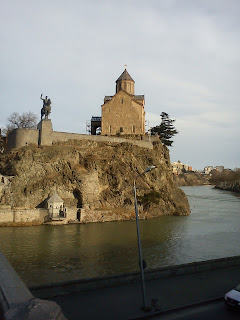Undervalued Ecosystem Services - Covid 19 and Fresh Air Destinations
While assessing the
carrying capacity of a destination (https://sustainableexperience.blogspot.com/2020/07/ask-many-questions-and-give-one.html), the impact of tourism on the services that
nature offers must also be considered. Environmental economics studies environmental
costs of economic growth that go unaccounted in the current market model. Negative
externalities such as pollution, depletion of resources, water overconsumption
etc. in a word ecosystem services are to be assessed in a destination at both
synchronic and diachronic levels.
The Millennium
Ecosystem Assessment (MA) is a major assessment of the human impact on the
environment. Launched in 2001 by the United Nations Secretary-General in 2000, was
published in 2005. It is the first UN comprehensive program on ecosystem
services, and it flashes out the benefits gained by humans from ecosystems.
The services
offered by an ecosystem can be summarized as all the ways and tools naturally
available for human needs, such as fibers, timber, natural medicines, but also
the natural processes of water purification, absorption of carboxyloxite, the
biogeochemical cycle etc.
These processes
and products are mostly taken for granted, and their depletion for decades was
not considered in cost assessments. To evaluate the value of natural goods and
services it is enough to consider what their dysfunctionality implies in terms
of reduced health, safety, and ecological risks.
On a synchronic
level, the alteration of the ecosystem services has an impact not only on the biological
ecosystem, but also on the socio-economic and cultural ones. In a long run,
they depletion may result in a forced and permanent evacuation of an area.
It is the case
of the desertification that is major triggers of massive migrations and abandonment
of native areas of ancient communities. (http://www.tempi-moderni.net/2019/10/11/lecologia-lungo-la-nuova-via-della-seta-i-parte/).
There are
primary benefits in protecting these services and goods, such as more stable
ecosystems, fewer threats to health, and also the aesthetic impact. Then there
are secondary benefits related to the condition of human well-being and social
peace, as well as on the level of productivity, or on the reduced costs of
public health expenditure.
An assessment
of benefits linked to policies in line with a healthy environmental economics
therefore includes economic opportunities and social impact parameters. In
tourism it is in tourists’ interest to interact with a healthy natural or urban
environment.
Moreover, if
the sources of entertainment and recreation that nature offers - such as lakes,
rivers, beaches, mountain areas or human settlements well integrated in their
ecological environments, are well preserved, the quality of the tourism offer
is definitely higher. Finally, the quality of life for residents and visitors
in healthy environments is – frankly speaking – priceless.
Visitors
benefit from these goods and services, but there are often no tariffs for
these. A culture of paying for natural services is not generalized, although
everyone is more or less aware of the risks of losing hem.
The value that
people attach to environmental goods and services is normally proportional to
the perceived risk rate of losing them. The higher the risk, and the pressing
perceived danger, the more the economic burden is accepted. Plus, this
additional price might be perceived as necessary depending on the level of
purchasing power, awareness and commitment to nature protection and other
variables
Ideally, a
tourist with medium purchasing power and an informed environmental awareness is
willing to pay an additional amount for the preservation / requalification of
environmental resources.
Ecosystem
services is duly valued and enhanced can create a tourism markets. Before the
Covid crisis my proposal during a Tourism Conference in Finale Ligure (Savona,
Italy) was to literally sell air. :-D
That is to say:
air quality played an important role in the development of tourism in the
Italian and French Rivieras, from the XVIII and even more so in the XIX
centuries. With the advent of sea&sun tourism this resource became kind of
obsolete as a primary source in tourism offer.
It should be
totally reconsidered now that air quality concerns are a major problem around
the world, not to mention the ongoing pandemic of deadly pneumonia.


Commenti
Posta un commento